-
 Bitcoin
Bitcoin $84,047.1565
-1.20% -
 Ethereum
Ethereum $1,605.9595
-2.12% -
 Tether USDt
Tether USDt $0.9998
0.02% -
 XRP
XRP $2.1251
-1.75% -
 BNB
BNB $583.5719
-0.68% -
 Solana
Solana $127.8858
-3.01% -
 USDC
USDC $0.9998
0.02% -
 TRON
TRON $0.2507
-0.76% -
 Dogecoin
Dogecoin $0.1552
-3.54% -
 Cardano
Cardano $0.6191
-3.67% -
 UNUS SED LEO
UNUS SED LEO $9.3580
-0.19% -
 Chainlink
Chainlink $12.3682
-4.38% -
 Avalanche
Avalanche $19.3567
-5.12% -
 Toncoin
Toncoin $2.9447
3.18% -
 Stellar
Stellar $0.2382
-1.00% -
 Shiba Inu
Shiba Inu $0.0...01181
-2.55% -
 Sui
Sui $2.1218
-4.52% -
 Hedera
Hedera $0.1592
-5.28% -
 Bitcoin Cash
Bitcoin Cash $324.3417
-0.89% -
 Litecoin
Litecoin $75.1603
-2.94% -
 Polkadot
Polkadot $3.5920
-4.19% -
 Dai
Dai $1.0000
0.01% -
 Bitget Token
Bitget Token $4.2905
0.07% -
 Hyperliquid
Hyperliquid $15.1958
-4.65% -
 Ethena USDe
Ethena USDe $0.9991
0.01% -
 Pi
Pi $0.6617
-10.84% -
 Monero
Monero $214.4416
0.09% -
 Uniswap
Uniswap $5.2266
-4.06% -
 OKB
OKB $51.1172
-3.48% -
 Pepe
Pepe $0.0...07002
-6.15%
How to set up stop loss and take profit orders on Binance?
Before setting stop-loss and take-profit orders on Binance, ensure you have a verified account and deposited funds into it to avoid delays in placing orders or inaccuracies in order execution.
Feb 21, 2025 at 12:27 pm
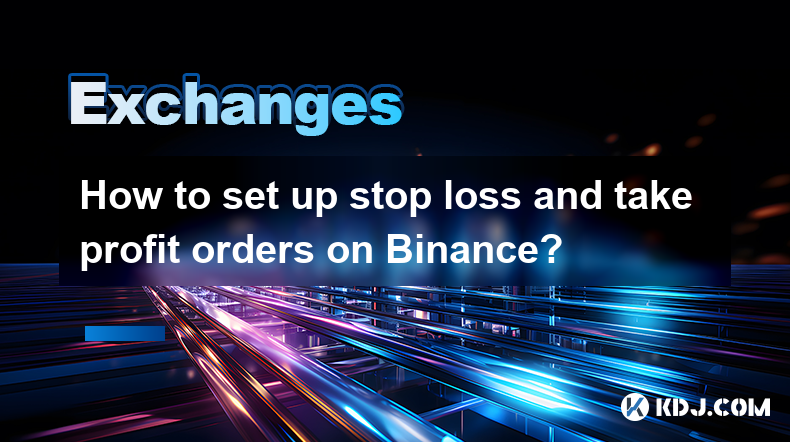
Prerequisites
First, ensure you have a verified Binance account. If not, go through the registration and verification process on the Binance website or app. This usually involves providing some personal information and identity verification documents.
Second, deposit funds into your Binance account. You can deposit various cryptocurrencies or even some fiat currencies, depending on your region and Binance's supported payment methods. Make sure you understand the deposit fees and processing times.
Understanding Stop - Loss and Take - Profit Orders
A stop - loss order is designed to limit your losses. When the price of a cryptocurrency reaches a certain level (the stop - loss price you set), the order is triggered, and your position is sold or closed. For example, if you bought Bitcoin at \(50,000 and set a stop - loss at \)48,000, when the Bitcoin price drops to $48,000, your Bitcoin will be sold to prevent further losses.
A take - profit order, on the other hand, is used to lock in your profits. Once the price of the cryptocurrency reaches the take - profit price you set, the order is executed, and you sell your position to realize the profit. For instance, if you bought Ethereum at \(3,000 and set a take - profit at \)3,500, when Ethereum reaches $3,500, it will be sold.
Navigating to the Trading Interface
Open the Binance website or mobile app. On the website, after logging in, you will see a series of tabs at the top. Locate and click on the "Trade" tab.
On the mobile app, after logging in, tap on the "Trade" icon, which usually looks like two intersecting lines. This will take you to the trading interface where you can select the cryptocurrency pair you want to trade.
Selecting the Cryptocurrency Pair
In the trading interface, you will see a search bar or a list of available cryptocurrency pairs. For example, if you want to trade Bitcoin against USDT (BTC/USDT), you can either type "BTC/USDT" in the search bar or find it in the list.
Some popular cryptocurrency pairs on Binance include ETH/USDT, BNB/USDT, and XRP/USDT. Once you've found the pair you want, click or tap on it to access the trading options for that specific pair.
Setting a Stop - Loss Order
After selecting the cryptocurrency pair, look for the "Order" section. In this section, you will see different order types. Select "Stop - Loss Limit" or "Stop - Loss Market", depending on your preference.
If you choose "Stop - Loss Limit":
Enter the stop - loss price. This is the price at which you want the order to be triggered. For example, if you bought a cryptocurrency at \(100 and want to limit your losses to 10%, you can set the stop - loss price at \)90.
Then, enter the limit price. This is the price at which you want to sell your cryptocurrency. It's important to note that if the market price moves quickly, your order may not be filled at the limit price.
If you choose "Stop - Loss Market":
Only enter the stop - loss price. Once the stop - loss price is reached, your cryptocurrency will be sold at the best available market price. This type of order is useful when you want to ensure that your position is closed quickly when the stop - loss level is hit.
Setting a Take - Profit Order
Similar to setting a stop - loss order, in the "Order" section, select "Take - Profit Limit" or "Take - Profit Market".
If you choose "Take - Profit Limit":
Enter the take - profit price. This is the price at which you want to lock in your profits. For example, if you bought a cryptocurrency at \(80 and want to take a 20% profit, you can set the take - profit price at \)96.
Then, enter the limit price. Just like with the stop - loss limit order, the limit price is the price at which you want to sell your cryptocurrency.
If you choose "Take - Profit Market":
Enter the take - profit price. When the price reaches this level, your cryptocurrency will be sold at the best available market price, allowing you to quickly realize your profits.
Order Confirmation and Monitoring
After entering all the necessary details for your stop - loss or take - profit order, review the order summary. Make sure all the information, such as the price, quantity, and order type, is correct.
Once you're satisfied, click or tap on the "Place Order" button. Binance will then process your order. You can monitor the status of your order in the "Orders" section. Here, you can see if the order has been filled, is pending, or has been canceled.
If the market conditions change and you want to modify or cancel your stop - loss or take - profit order, you can usually do so in the "Orders" section. Look for the option to "Modify" or "Cancel" the specific order you want to adjust.
Advanced Settings and Considerations
Binance offers some advanced settings for stop - loss and take - profit orders. For example, you can set "Iceberg Orders" for both stop - loss and take - profit. An iceberg order hides a large portion of your order quantity from the market, only showing a small part at a time.
You can also set time - in - force options. For instance, "Good - Till - Cancelled (GTC)" means your order will remain active until it is either filled or you cancel it. "Immediate - or - Cancel (IOC)" means the order will be filled immediately or canceled if it can't be filled completely right away.
Another consideration is the volatility of the cryptocurrency market. Cryptocurrencies can be highly volatile, so when setting stop - loss and take - profit levels, take into account the typical price swings of the specific cryptocurrency you're trading. For example, Bitcoin may have different volatility patterns compared to a smaller, less - established cryptocurrency.
Tips for Effective Use
Don't set stop - loss and take - profit levels too close to the current market price, especially in a highly volatile market. This could lead to your orders being triggered prematurely.
Regularly review and adjust your stop - loss and take - profit levels as the market situation changes. For example, if a cryptocurrency you're holding has been steadily increasing in value, you may want to raise your stop - loss level to protect some of your profits.
Consider using technical analysis tools available on Binance, such as moving averages and trend lines, to help you determine more accurate stop - loss and take - profit levels. These tools can give you insights into the market trends and potential price reversals.
Using Stop - Loss and Take - Profit in Different Market Conditions
In an uptrend market, you can set your stop - loss a bit higher to allow for some upward price movement while still protecting your investment. For example, if the price is steadily rising, you can set the stop - loss just below the recent support level.
In a downtrend market, set your take - profit levels more conservatively. Since the market is generally moving downwards, you may want to take profits earlier to avoid potential further losses.
In a sideways or range - bound market, set your stop - loss and take - profit levels based on the upper and lower bounds of the price range. If the price is trading between \(50 and \)60, you can set a stop - loss just below \(50 and a take - profit just above \)60.
Common Mistakes to Avoid
One common mistake is not understanding the difference between limit and market orders for stop - loss and take - profit. Make sure you know when to use each type to avoid unexpected results.
Another mistake is over - relying on stop - loss and take - profit orders without considering the overall market fundamentals. For example, a major news event can cause the market to move in an unexpected way, and your stop - loss or take - profit orders may not work as expected.
Also, don't forget to factor in the trading fees when setting your stop - loss and take - profit levels. Binance charges a certain fee for each trade, and this can affect your overall profit or loss.
Integration with Other Trading Strategies
You can integrate stop - loss and take - profit orders with other trading strategies, such as dollar - cost averaging. For example, if you're regularly investing a fixed amount in a cryptocurrency, you can set stop - loss and take - profit orders for each purchase to manage your risk.
If you're using leverage trading, stop - loss and take - profit orders become even more crucial. Leverage magnifies both your profits and losses, so having proper stop - loss and take - profit levels can help you avoid significant losses.
Combining stop - loss and take - profit with sentiment analysis can also be effective. For example, if there is a lot of negative sentiment in the market towards a particular cryptocurrency, you may want to set your stop - loss a bit tighter.
Mobile - Specific Considerations
When using the Binance mobile app to set stop - loss and take - profit orders, make sure you have a stable internet connection. A poor connection can lead to order placement failures or incorrect order details.
The mobile app has a slightly different user interface compared to the website. However, the basic steps for setting stop - loss and take - profit orders are the same. Familiarize yourself with the layout of the mobile trading interface to ensure smooth order placement.
Some mobile devices may have limitations in terms of screen size and processing power. This could affect the speed at which you can access and place orders. If possible, use a device with a larger screen and good processing capabilities for better trading experience.
Web - Specific Considerations
When using the Binance website, make sure your browser is up - to - date. An outdated browser may not display the trading interface correctly or may have compatibility issues with Binance's order - placement system.
On the web, you may have more access to advanced trading tools and features compared to the mobile app. For example, you can view more detailed market charts and use more complex technical analysis indicators to help you set stop - loss and take - profit levels.
Also, consider using a desktop or laptop computer with a larger screen for better visibility of the trading interface. This can make it easier to review and adjust your stop - loss and take - profit orders, especially when dealing with multiple cryptocurrency pairs.
Tax Implications
Keep in mind that when your stop - loss or take - profit orders are executed, it may have tax implications. In many countries, profits from cryptocurrency trading are taxable.
You need to keep accurate records of all your trades, including the date, price, and quantity of the cryptocurrency bought and sold. This information will be useful when calculating your tax liability.
Consult a tax professional or refer to the tax regulations in your country to understand how cryptocurrency trading profits are taxed and how to report your stop - loss and take - profit trades correctly.
Security Measures
Ensure the security of your Binance account when setting stop - loss and take - profit orders. Use two - factor authentication (2FA) to add an extra layer of security. This can be either through a mobile authenticator app or SMS verification.
Be cautious of phishing attempts. Binance will never ask you for your password or 2FA code via email or other unsecured channels. If you receive any suspicious messages asking for your account details, do not respond and report it to Binance immediately.
Regularly update your account password with a strong, unique password. Avoid using the same password for multiple accounts to prevent a single - point - of - failure in case one account is compromised.
Customer Support
If you encounter any issues while setting stop - loss and take - profit orders on Binance, such as order placement problems or incorrect order execution, you can reach out to Binance's customer support.
Binance offers multiple channels for customer support, including email, live chat (if available), and a comprehensive help center. Check the help center first as it may have answers to common questions and issues related to stop - loss and take - profit orders.
When contacting customer support, provide as much detail as possible about the problem, such as the order number, cryptocurrency pair, time of the issue, and a description of what went wrong. This will help the support team resolve your issue more quickly.
Disclaimer:info@kdj.com
The information provided is not trading advice. kdj.com does not assume any responsibility for any investments made based on the information provided in this article. Cryptocurrencies are highly volatile and it is highly recommended that you invest with caution after thorough research!
If you believe that the content used on this website infringes your copyright, please contact us immediately (info@kdj.com) and we will delete it promptly.
- Sweden Democrats Are Pushing for the Country to Adopt a National Bitcoin Strategy
- 2025-04-16 04:05:12
- Troller Cat ($TCAT) Leads the New Wave of Meme Coins in 2025
- 2025-04-16 04:05:12
- Bitcoin (BTC) price teased above $86k for the first time, on Tuesday during the mid-New York session
- 2025-04-16 04:00:13
- This week's MANTRA Meltdown has left the crypto market and regulators seeking answers.
- 2025-04-16 04:00:13
- Rexas Finance (RXS) Is Ready to Steal the Show from Pepe Coin (PEPE) in the 2025 Bull Run
- 2025-04-16 03:55:12
- Trump Administration Could Use Tariff Revenue to Buy Bitcoin (BTC)
- 2025-04-16 03:55:12
Related knowledge

How do I contact customer service on Binance to resolve issues?
Mar 16,2025 at 04:30am
Key Points:Binance's customer service is primarily self-service, relying heavily on its help center and FAQs.Direct contact methods are limited, with email support being the most common route for non-urgent issues.Urgent issues may require using the in-app support system, though response times can vary.Understanding Binance's support structure and utili...
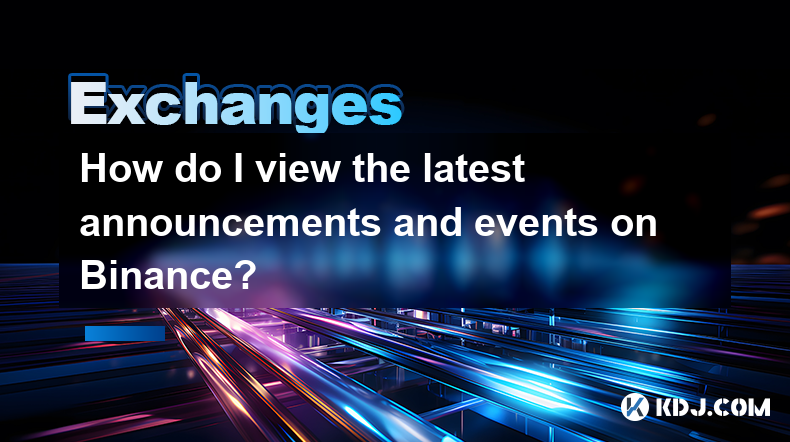
How do I view the latest announcements and events on Binance?
Mar 18,2025 at 10:18pm
Key Points:Binance utilizes multiple channels for disseminating announcements and events.The official Binance website is the primary source.Binance's social media platforms offer timely updates.Email subscriptions keep users informed about relevant announcements.Third-party aggregators can supplement official channels but require caution.How Do I View t...

How do I set up a subaccount on Binance?
Mar 14,2025 at 01:50pm
Key Points:Binance does not offer traditional "subaccounts" in the sense of separate accounts with independent logins under a master account.Instead, Binance offers features like user-defined labels for better portfolio management and API keys for automated trading. These provide functionality similar to subaccounts.Setting up these features involves na...
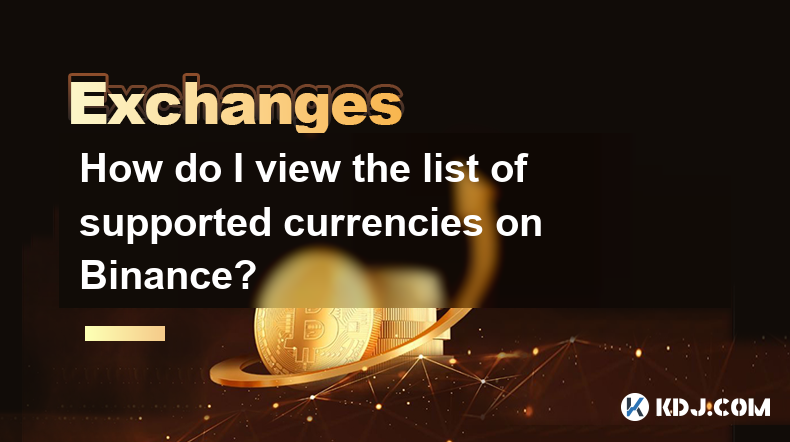
How do I view the list of supported currencies on Binance?
Mar 15,2025 at 05:35am
Key Points:Binance supports a vast and frequently updated list of cryptocurrencies. There's no single, static list.Finding supported currencies requires navigating Binance's website or app interfaces.Different sections of the exchange show different subsets of supported currencies (e.g., trading, staking, etc.).The availability of specific cryptocurrenc...
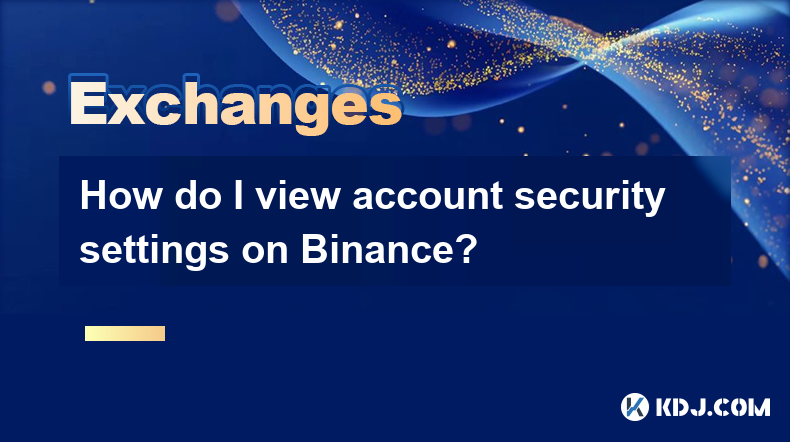
How do I view account security settings on Binance?
Mar 15,2025 at 08:40pm
Key Points:Binance's security settings are spread across multiple sections of your account. This article will guide you through each crucial area.Understanding and implementing these settings is paramount to protecting your cryptocurrency assets.We'll cover two-factor authentication (2FA), withdrawal whitelists, and other essential security features.Reg...
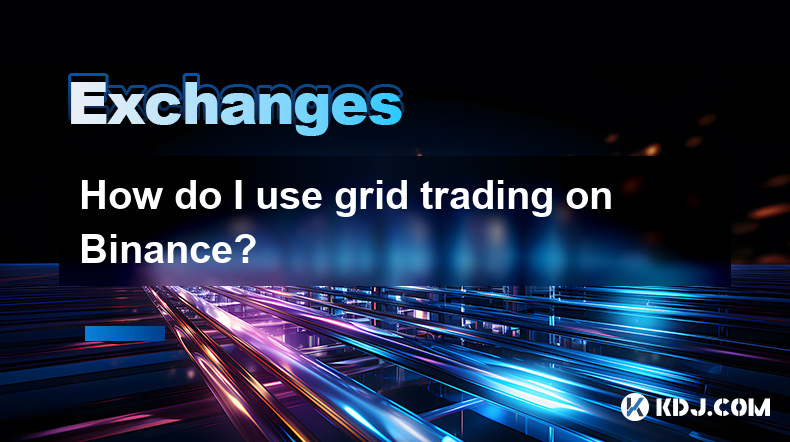
How do I use grid trading on Binance?
Mar 14,2025 at 04:25pm
Key Points:Grid trading on Binance involves automatically buying low and selling high within a defined price range.Binance offers a built-in grid trading bot, simplifying the process.Setting up a grid bot requires defining parameters like price range, grid quantity, and investment amount.Risk management is crucial, as losses are possible despite the aut...

How do I contact customer service on Binance to resolve issues?
Mar 16,2025 at 04:30am
Key Points:Binance's customer service is primarily self-service, relying heavily on its help center and FAQs.Direct contact methods are limited, with email support being the most common route for non-urgent issues.Urgent issues may require using the in-app support system, though response times can vary.Understanding Binance's support structure and utili...

How do I view the latest announcements and events on Binance?
Mar 18,2025 at 10:18pm
Key Points:Binance utilizes multiple channels for disseminating announcements and events.The official Binance website is the primary source.Binance's social media platforms offer timely updates.Email subscriptions keep users informed about relevant announcements.Third-party aggregators can supplement official channels but require caution.How Do I View t...

How do I set up a subaccount on Binance?
Mar 14,2025 at 01:50pm
Key Points:Binance does not offer traditional "subaccounts" in the sense of separate accounts with independent logins under a master account.Instead, Binance offers features like user-defined labels for better portfolio management and API keys for automated trading. These provide functionality similar to subaccounts.Setting up these features involves na...

How do I view the list of supported currencies on Binance?
Mar 15,2025 at 05:35am
Key Points:Binance supports a vast and frequently updated list of cryptocurrencies. There's no single, static list.Finding supported currencies requires navigating Binance's website or app interfaces.Different sections of the exchange show different subsets of supported currencies (e.g., trading, staking, etc.).The availability of specific cryptocurrenc...

How do I view account security settings on Binance?
Mar 15,2025 at 08:40pm
Key Points:Binance's security settings are spread across multiple sections of your account. This article will guide you through each crucial area.Understanding and implementing these settings is paramount to protecting your cryptocurrency assets.We'll cover two-factor authentication (2FA), withdrawal whitelists, and other essential security features.Reg...

How do I use grid trading on Binance?
Mar 14,2025 at 04:25pm
Key Points:Grid trading on Binance involves automatically buying low and selling high within a defined price range.Binance offers a built-in grid trading bot, simplifying the process.Setting up a grid bot requires defining parameters like price range, grid quantity, and investment amount.Risk management is crucial, as losses are possible despite the aut...
See all articles























































































